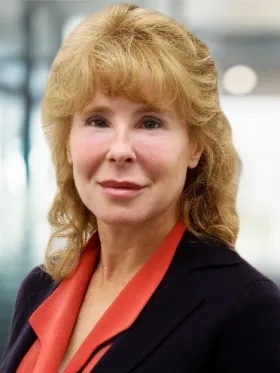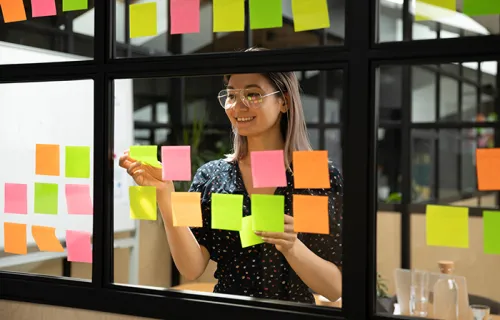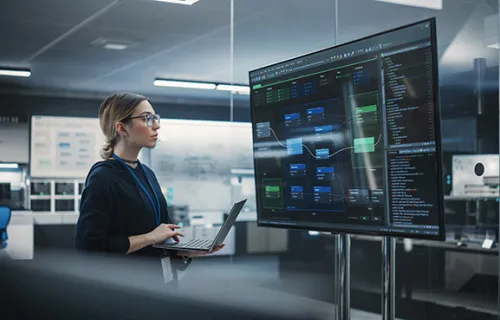April is Autism & Neurodiversity Awareness Month , which holds a special appeal for me. Autism, now more properly called autism spectrum disorder (ASD), manifests in several ways, many of which affect interpersonal interactions. A person on the spectrum might not speak or might fixate their attention on one thing and talk about nothing else for hours, for example.
An underemployed population
According to Cyberseek, there have been 448,003 job openings so far this year requesting cybersecurity-related skills, and employers are struggling to find workers who possess them. Couple the importance of cybersecurity with the level of effort it takes employers to fill these positions—they take on average 21% longer to fill than other IT jobs—and you see the makings of a workforce crisis.
At the same time, an estimated 80% of adults with ASD are unemployed or underemployed. These overlooked innovators represent a rich source of technical, creative and analytical talent. Some manifestations of neurodivergence can provide significant advantages in certain technology roles—including cybersecurity.
The social demands of a workplace can be difficult for people on the spectrum to navigate. Holding conversations and responding to social cues are not easy for some with ASD, which can cause some neurotypical co-workers and managers to label these individuals as “odd” or difficult.
Employers also often to fail to make necessary accommodations for the success of neurodiverse employees. Unfortunately, individuals with disabilities often stay silent about their needs for fear of being labeled. If organizations are not creating inclusive environments, secrecy reigns and neither employees nor organizations can reach their full potential.
In reality, people on the spectrum are well-suited for certain types of work. What might be perceived as problems, such as obsessive attention or repetitive behaviors, can translate into exacting attention to detail and pattern recognition. Another standout quality of employees with ASD is their incredibly high productivity rate. In fact, neurodiverse software teams are up to 30% more productive than neurotypical teams. This is directly because of the traits mentioned above—high attention to detail, excellent concentration and relentless persistence. While a neurotypical individual might quit a difficult task, individuals with autism are more willing to keep working on it until it’s complete and perfect.
Finding solutions in partnership
CGI partners with Melwood, a non-profit organization in Washington D.C., dedicated to helping people with disabilities find opportunities for work. Our joint projects are geared toward education and career placement for individuals who have sought-after skills.
I first started working with Melwood in 2019, while I was with my previous employer. The organization plays a pivotal role in helping neurodivergent individuals with sought-after skills find employment in cybersecurity and other fields where those skills are needed.
Over the years, and since moving to CGI, that relationship has only deepened. I’ve played a lead role in CGI’s embrace of this partnership and active engagement in running STEM camps, establishing apprenticeship programs and other contributions.
I have also tried to raise awareness within the broader U.S. government about the talent lurking in this often-overlooked labor pool. In 2022, I moderated a congressional panel at Melwood’s annual “Inclusion through Policy Innovation” conference at the National Press Club in D.C. In that session, we discussed legislative policies under consideration to modernize the AbilityOne program, the conversations happening at the time to address broader disability employment, and how federal procurement policy can be changed to incentivize more inclusive employment in the federal contracting workforce.
Later in 2023, I had the amazing opportunity to work with USGIF to engage executive leadership from the National Geospatial-Intelligence Agency (NGA), NASA, and the Intelligence & National Security Alliance (INSA), and to continue the conversation at the U.S. Geospatial Intelligence Foundation’s GEOINT Conference. I moderated a panel discussion at the conference titled “Differences Adding Dimension: Neurodiversity in ‘Team GEOINT.’”
Testing the waters
The U.S. government launched its Neurodiverse Federal Workforce pilot program in January 2021. A joint project between the NGA, MITRE and Melwood, this initiative brought several neurodiverse interns to NGA, where they worked in geospatial and imagery analysis roles. After the six-month internship, and security clearance processing, many of the interns joined NGA full time.
Now, the Cybersecurity and Infrastructure Security Agency has launched its own pilot, leveraging this award-winning curriculum and partnership with industry.
Preparing neurodiverse people for employment
The mission of Melwood’s AbilIT program is to prepare neurodiverse people for employment within the cyber industry. The other side of that equation is that industry and the government are learning more about ASD, and what autism is and is not. I have been an advocate for AbilIT graduates and learned how to integrate them into positions where they could thrive. I am working with others to build out a similar initiative at CGI Federal.
Fast forward to my current role supporting strategy, innovation alignment and mission enablement across various business units at CGI Federal. To be effective, I’m also helping to redefine the talent pipeline to be more inclusive to neurodiverse individuals, as well as infusing this diversity directly into service delivery models that drive true mission value for our customers. Right now, there is a lot of opportunity out there that I’m hoping to help fill.
It starts with education
An aspirational goal of the partnership with Melwood was to build a STEM camp for neurodiverse individuals and expand the STEM@CGI program. Our nationwide STEM@CGI program exists to introduce, inspire and mentor students studying science and technology to help increase diversity and inclusion in the IT industry. It also aligns with our Disability and Neurodiverse Advocates (DNA) Member Resource Group’s mission of creating an environment that enables disability, and neurodiversity inclusion and equity by championing accessibility and company practices that empower all members to achieve their goals. Together, we started laying the foundation for a more inclusive STEM pipeline – engaging talent at an early age. In the summer of 2023, CGI and Melwood successfully delivered the first STEM curriculum at Camp Accomplish.
Making workplaces friendlier to neurodiverse persons isn’t just about identifying and recruiting talent—it is an indispensable aspect of the solution. It is more deeply about nurturing talent, beginning early, while concurrently, building workplace environments that help them thrive and create opportunities for other members to learn from them. Technical training is important, but building an inclusive environment into the workplace culture is the other side of it. Just this month, I hosted Dr. Hala Annabi (co-author of the Autism @ Work Playbook and upcoming Federal Autism @ Work Playbook) from the University of Washington to speak to our members at CGI about neurodiversity in the workplace along with inclusion strategies to improve outcomes for our workforce.
A personal passion
My son, now in his early 20s, is neurodiverse and has measurable learning disabilities. Therefore, I am acutely aware of the difficulties people like him, who appear “different,” can encounter in school, at work and in social settings.
My son had months of occupational therapy and years of speech therapy well before he started kindergarten. But he embraced school with enthusiasm. He had a supportive network of teachers and an individual education program (IEP) that tailored his classes to his divergence in learning—using different methods of instruction and providing him with an environment free of distractions at test time.
He gradually overcame many of his limitations during primary school, motivated by a keen desire to “be like everyone else,” and often told me, “If I have a good teacher, I can do it.”
He graduated high school with a 3.7 GPA, and his future looked bright. However, things began to unravel in college. High school had provided structure and a team of educators to help him, but the world presents a very different landscape, starting at the collegiate level. Success as a neurodiverse adult depends on the ability to advocate for oneself and to initiate the social interactions that build a helping network. That’s a tall order for someone who begins far behind the starting line.
At the moment, my son has halted college and he is trying to plan his next move. He works a part-time job, but the future looks less promising. He is attuned to those around him and how they withdraw or make fun when they see he is “different.” Success for him is self-respect, feeling competent and belonging. But he doesn’t trust that an employer will take the measures necessary to allow him to thrive. He has many aspirational goals, but with every opportunity he pursues, he encounters another reminder of what he cannot do.
Programs like Melwood’s AbilIT give me hope that the workplace might be more welcoming of neurodiverse people by the time my son is ready to re-launch a career. The program is working toward the same goal; it taps into the unique abilities and aptitude that high-functioning people with ASD can bring to the table.
This is why I am an advocate in creating environments to accommodate neurodiverse individuals in the workplace. By enabling change and creating a successful model that other companies can emulate, I hope to enrich the ecosystem so that more individuals with a disability feel there is an organization out there fully committed to supporting them.
We may be a more enlightened society regarding neurodiversity than we used to be, but there is still a stigma associated with having a disability. Did you know that 80% of all disabilities are acquired between the ages of 16 and 64? It’s crucial, then, to remember that anyone could become a person with a disability at any time; there is no “us” and “them.” Together, we must overcome that cultural stereotype.
It seems like a long road ahead to make those social changes, and in many ways it is. If we don’t, though, we risk missing out on the future contributions of some truly smart and talented people, like my son. To me, his smile tells a story of enduring resilience, where abilities continue to shine brighter than limitations.





